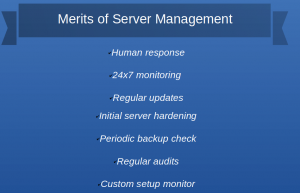
Server maintenance is the cycle of keeping a server’s programming refreshed and running so a PC organization can work easily and stay away from personal time or loss of information. Regular Server management and maintenance will keep the server running true to form and will help stay away from an aggregate or halfway organization disappointment.

How the server works
A server is an independent PC that gives information and different administrations to one or a few different PCs in a given organization. The principle advantage to a server is that it permits unified administration and checking of organization access and organization information, and servers can have power, hard drive, and processor redundancies that are ordinarily not accessible in a PC.
Server Maintenance Steps:
- Check your reinforcements are working.
Before rolling out any improvements to your server information base and framework, be certain that you need to take a reinforcement before doing any refresh and your reinforcements are turned out great. Verify that you have chosen the right reinforcement and right area.
- Check disk use.
Keep your disk stockpiling clean and don’t utilize your server framework as a recorded system. Delete old messages, logs, and s/w forms that are not being used. A more modest information impression implies quicker recuperation. Watch out for your plate uses if your segment arrives at 100%, your server may quit working, and data set tables and information might be bad and lost.
- Screen RAID Alarms.
Screen your RAID status; all servers should utilize RAID. A solitary circle disappointment can cause a total framework disappointment.
- Update Your OS.
Continuously update your framework if you are utilizing Linux because such OS discharge regular updates and keeping steady over these updates can be troublesome. To defeat this issue, you can utilize robotized fix the board devices and have observing set up to alarm when a framework is outdated. On the off chance that you are refreshing your server physically (or not in the least), you may miss significant security refreshes.
- Update your Control Panel.
On the off chance that you are utilizing a facilitating Cpanel make certain to refresh it too. This will make your framework forward-thinking and fix any realized issue identified with facilitating.
- Check application refreshes.
Update your web applications, on the off chance that you are utilizing CMS or any open-source program for your web application particularly well-known projects like WordPress.
- Check far-off administration devices.
Keep up your far-off server through distant control center, far-off reboot, and far-off salvage mode, these are fundamental devices for far-off server executives.
- Check for equipment blunders.
Equipment issues are normal yet make a major issue, so you may audit the log for any equipment issues like plate read blunder, network disappointment.
- Check server use.
Audit your server’s circle, CPU, RAM, and organization usage.
- Audit client accounts.
On the off chance that you have had staff changes, customer undoings or other client transforms, you will need to eliminate these clients from your framework. Putting away old locales and clients is both a security and lawful danger.
- Change passwords.
Change any passwords each 6 to a year, particularly if you have given out passwords to others for maintenance.
- Check framework security.
Intermittently survey your server’s security utilizing a remote examining instrument like Nessus.

